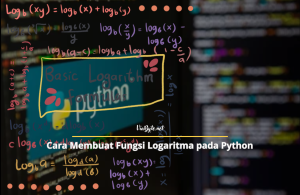Hello, Viabyte! In this article, we will explore how to create a navigation bar with icons using HTML, CSS, and some simple JavaScript.
Navigation bars are crucial elements of any website as they provide easy access to different sections or pages. Adding icons to the navigation bar can enhance its visual appeal and make it more engaging for users. Let's dive into the step-by-step process of creating one!
Step 1: Setting up the HTML Structure
To begin, let's define the HTML structure of our navbar. Open your preferred HTML editor and create a new HTML file. Start by adding a navigation element with a class or ID to identify it easily:
<nav class="navbar"> <!-- Navbar content goes here --> </nav>
Step 2: Adding Navigation Links with Icons
Next, let's add the navigation links along with their respective icons. We'll use the Font Awesome library to easily incorporate icons into our navbar.
Font Awesome provides a wide range of free icons that you can choose from. You can either download and host the Font Awesome files on your server or use the CDN (Content Delivery Network) approach:
<!-- Add this line inside the <head> tag of your HTML file --> <link rel="stylesheet" href="https://cdnjs.cloudflare.com/ajax/libs/font-awesome/5.15.3/css/all.min.css"> <!-- Navbar structure with icons --> <nav class="navbar"> <a href="#"><i class="fas fa-home"></i> Home</a> <a href="#"><i class="fas fa-search"></i> Search</a> <a href="#"><i class="fas fa-user"></i> Profile</a> </nav>
Step 3: Styling the Navbar
Now that we have the basic structure and icons in place, let's style the navbar to make it visually appealing. We'll use CSS to achieve the desired appearance. Add the following CSS code to your HTML file or create a separate CSS file and link it:
<style>
.navbar {
background-color: #333;
color: #fff;
display: flex;
justify-content: space-between;
align-items: center;
padding: 10px;
}
.navbar a {
color: #fff;
text-decoration: none;
margin-right: 10px;
}
.navbar i {
margin-right: 5px;
}
</style>
Step 4: Adding Interactivity with JavaScript
To make our navbar more interactive, we can add functionality such as a dropdown menu for mobile devices. For this, we'll utilize JavaScript. Here's an example of how to implement a responsive navbar using JavaScript:
<script>
const navbarToggle = document.querySelector('.navbar-toggle');
const navbarMenu = document.querySelector('.navbar-menu');
navbarToggle.addEventListener('click', () => {
navbarMenu.classList.toggle('active');
});
</script>
Step 5: Finalizing the Navbar
With all the elements in place, let's finalize our navbar by adding a responsive design and any additional styling. Here's an example of how to achieve this:
<style>
/* Previous CSS code omitted for brevity */
.navbar-menu {
display: none;
}
.navbar-menu.active {
display: block;
}
/* Responsive styles */
@media screen and (max-width: 768px) {
.navbar {
flex-direction: column;
}
.navbar-toggle {
display: block;
cursor: pointer;
}
.navbar-menu {
display: none;
margin-top: 10px;
}
.navbar-menu.active {
display: block;
}
}
</style>
Viabyte, congratulations on creating a stylish navbar with icons using HTML, CSS, and a touch of JavaScript! We've covered the step-by-step process of setting up the HTML structure, adding navigation links with icons, styling the navbar, adding interactivity, and making it responsive for different devices.
By incorporating icons into your navbar, you can enhance the visual appeal of your website and provide a more engaging user experience. Feel free to explore different icon libraries or customize the styles to match your website's design. Happy coding, and we'll see you in the next exciting article!





